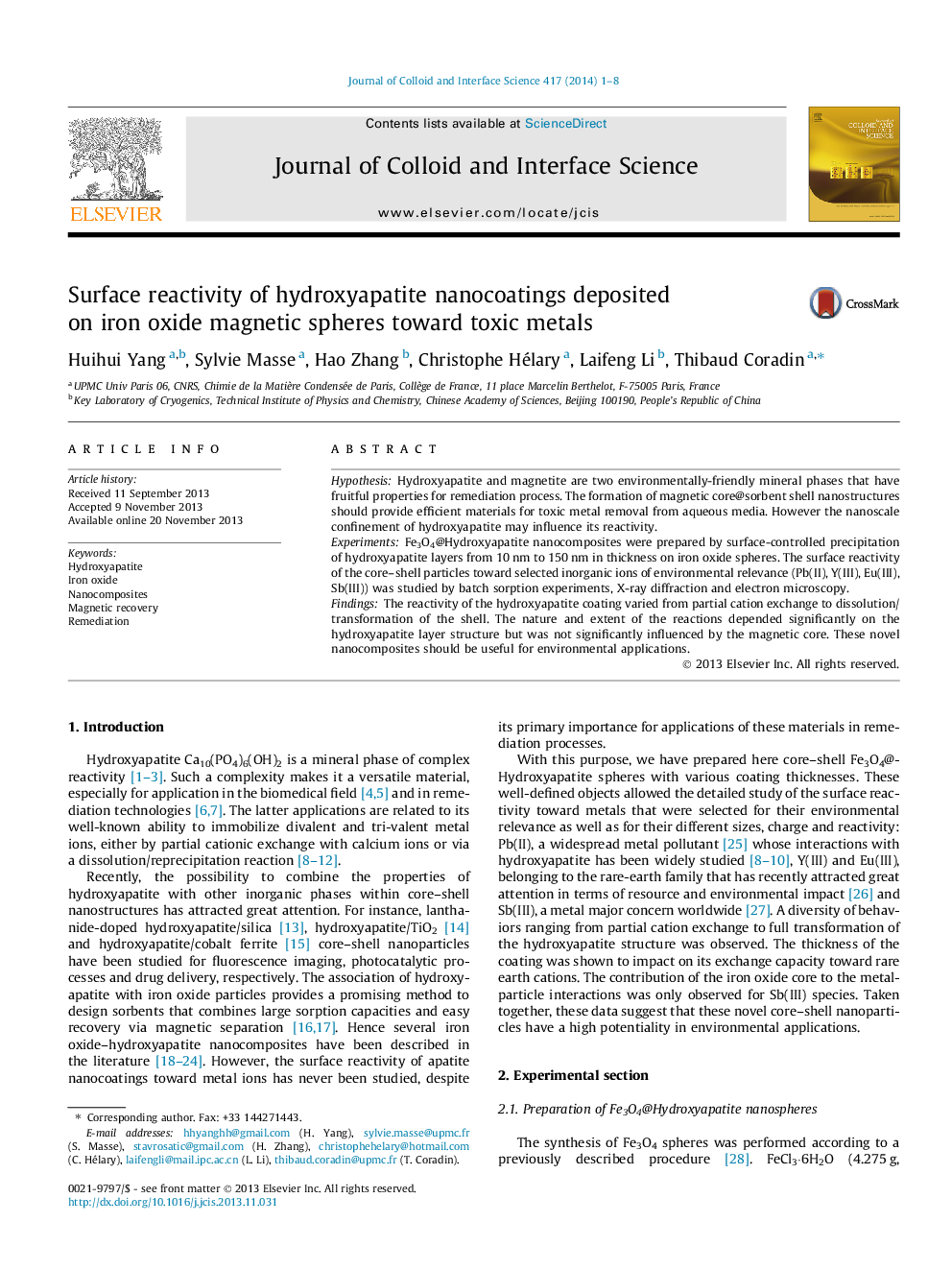| کد مقاله | کد نشریه | سال انتشار | مقاله انگلیسی | نسخه تمام متن |
|---|---|---|---|---|
| 607539 | 1454578 | 2014 | 8 صفحه PDF | دانلود رایگان |
• Fe3O4@Hydroxyapatite magnetic spheres with tunable shell thickness were prepared.
• Their interactions with Pb(II), Y(III), Eu(II) and Sb(III) toxic metals were studied.
• Rare-earth metals were inserted via ion-exchange in the hydroxyapatite structure.
• Pb and Sb led to the precipitation of hydroxypyromorphite and senarmontite.
• Fe3O4@Hydroxyapatite nanocomposites are promising sorbents for water remediation.
HypothesisHydroxyapatite and magnetite are two environmentally-friendly mineral phases that have fruitful properties for remediation process. The formation of magnetic core@sorbent shell nanostructures should provide efficient materials for toxic metal removal from aqueous media. However the nanoscale confinement of hydroxyapatite may influence its reactivity.ExperimentsFe3O4@Hydroxyapatite nanocomposites were prepared by surface-controlled precipitation of hydroxyapatite layers from 10 nm to 150 nm in thickness on iron oxide spheres. The surface reactivity of the core–shell particles toward selected inorganic ions of environmental relevance (Pb(II), Y(III), Eu(III), Sb(III)) was studied by batch sorption experiments, X-ray diffraction and electron microscopy.FindingsThe reactivity of the hydroxyapatite coating varied from partial cation exchange to dissolution/transformation of the shell. The nature and extent of the reactions depended significantly on the hydroxyapatite layer structure but was not significantly influenced by the magnetic core. These novel nanocomposites should be useful for environmental applications.
Figure optionsDownload high-quality image (102 K)Download as PowerPoint slide
Journal: Journal of Colloid and Interface Science - Volume 417, 1 March 2014, Pages 1–8
